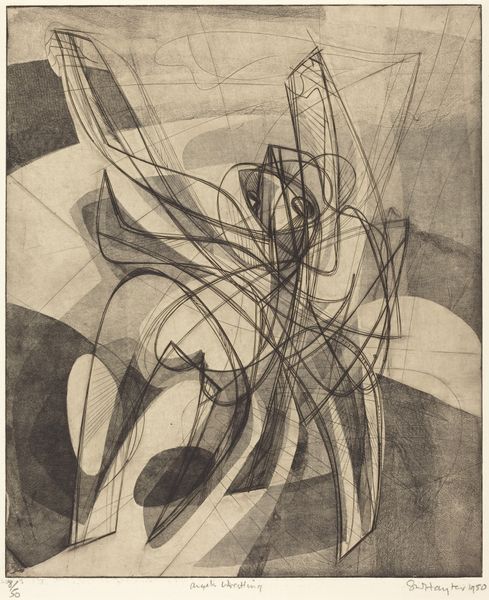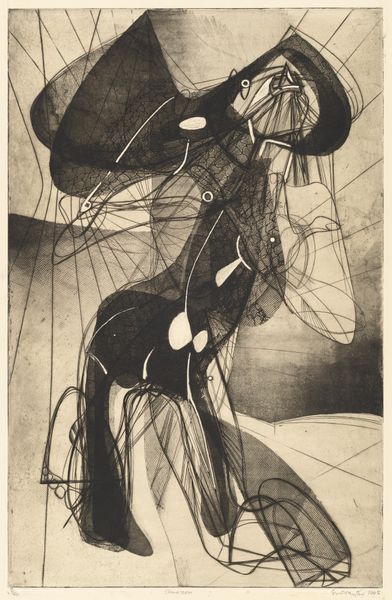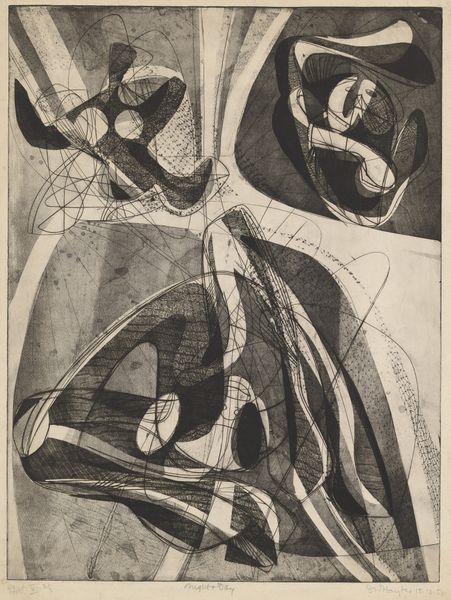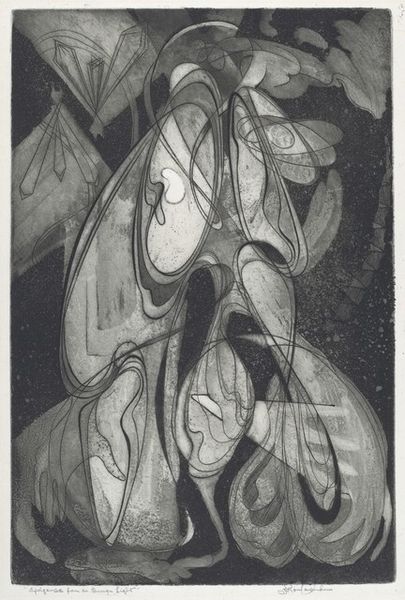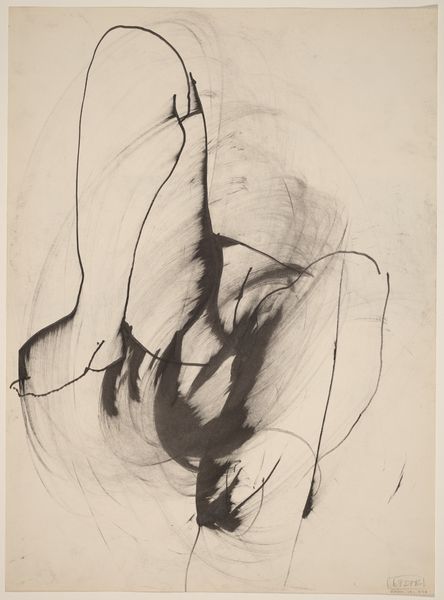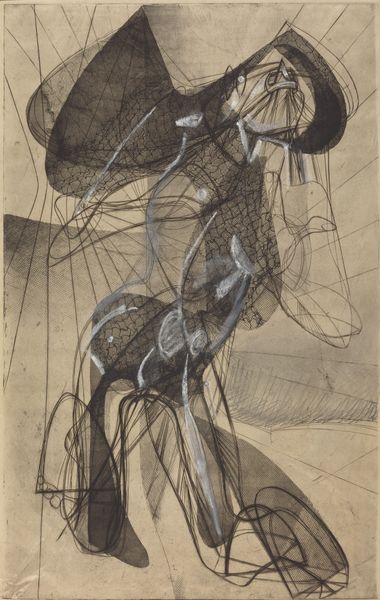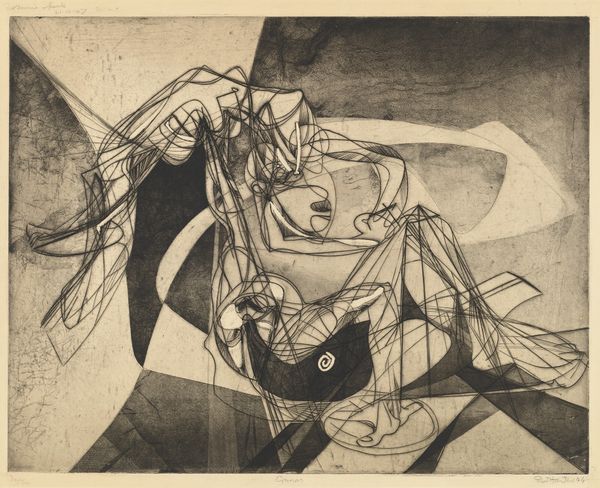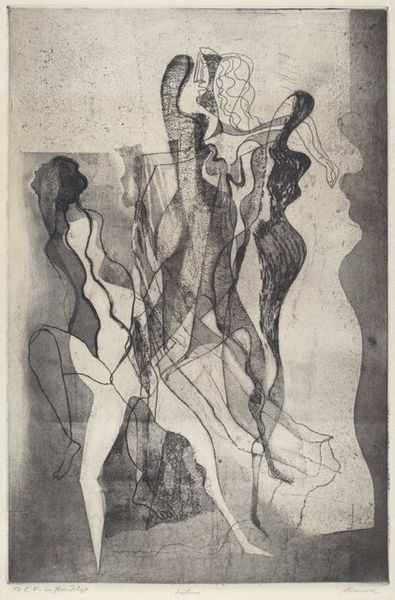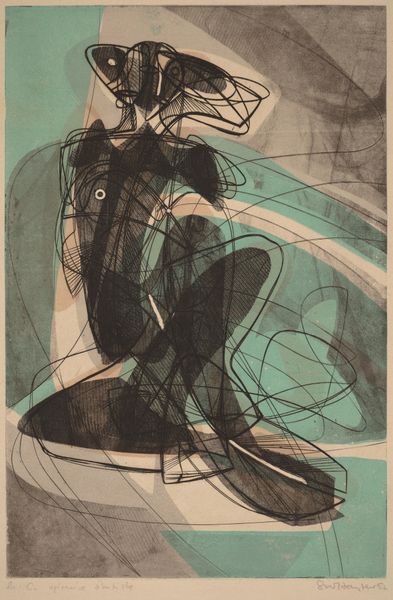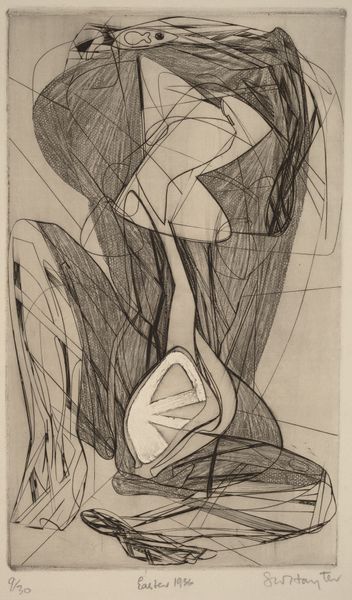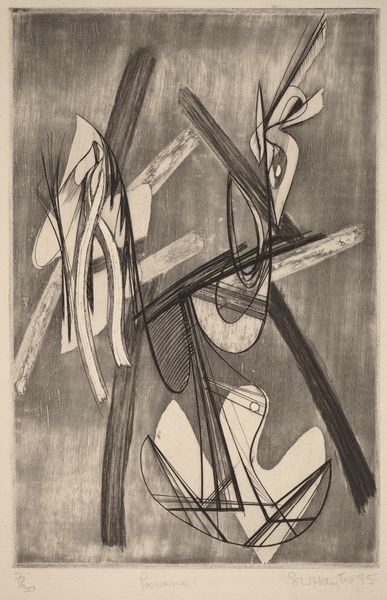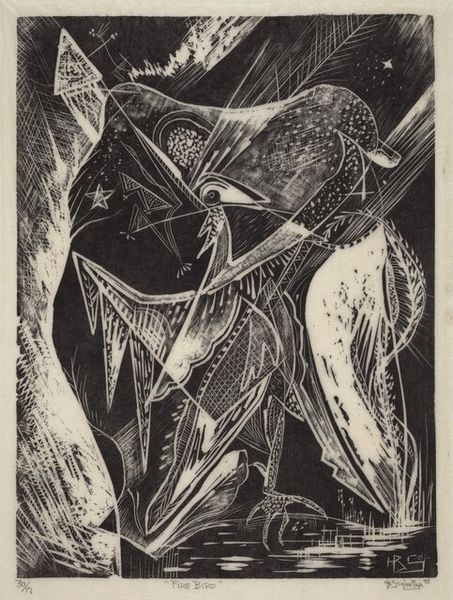
print, etching
#
abstract-expressionism
# print
#
etching
#
form
#
abstraction
#
line
Dimensions: plate: 48.9 x 39.4 cm (19 1/4 x 15 1/2 in.) sheet: 64.1 x 53 cm (25 1/4 x 20 7/8 in.)
Copyright: National Gallery of Art: CC0 1.0
Curator: This etching by Stanley William Hayter, entitled "Sorcier," dates from 1953. Editor: My initial reaction is of dynamic energy—chaotic almost. There’s a figure struggling to emerge from a web of lines. Is it supposed to feel this unsettling? Curator: I find the composition incredibly compelling. Notice the swirling lines and the interplay of light and shadow achieved through the etching process. Hayter’s expert use of line becomes form, creating a captivating visual dance. Editor: Speaking of process, the physicality of etching—the labor of cutting into that metal plate, the acid baths… it all seems relevant. There's an inherent tension in forcing the material to yield to the artist’s vision. A modern take on alchemy, perhaps? Turning base materials into something… suggestive. Curator: The "Sorcier" evokes a powerful sense of abstraction. Hayter masterfully employs the linear vocabulary of abstract expressionism to imply form without strictly defining it, allowing the viewer to complete the figure through an active, subjective experience. Editor: Subjective, definitely. I'm curious about the context of this piece. Post-war anxiety? An exploration of the subconscious through printmaking? The materials suggest industry and reproducibility, but the imagery hints at something far older. Curator: Interesting you should say that. The interplay between mechanization and myth-making, typical of the post-war art world, really informs his technique. Look closer; Hayter introduces the etching as both a form and as a commentary on artistic freedom itself. The lines move and shape the figure, suggesting a subject unrestricted by traditional sculpture and painting norms. Editor: So, in this tangled mass of lines and labor, we find not just a “sorcerer,” but a reflection of the anxieties and possibilities embedded in the materials themselves? Curator: Precisely. The visual tension inherent in the print offers, ultimately, a liberation from artistic and social constraint. Editor: I think what strikes me most now is how those material processes give voice to deeper human themes: struggle, transformation, the interplay between control and chaos. Thanks for that closer examination! Curator: My pleasure. The beauty of Hayter is always there if you look closely enough.
Comments
No comments
Be the first to comment and join the conversation on the ultimate creative platform.

